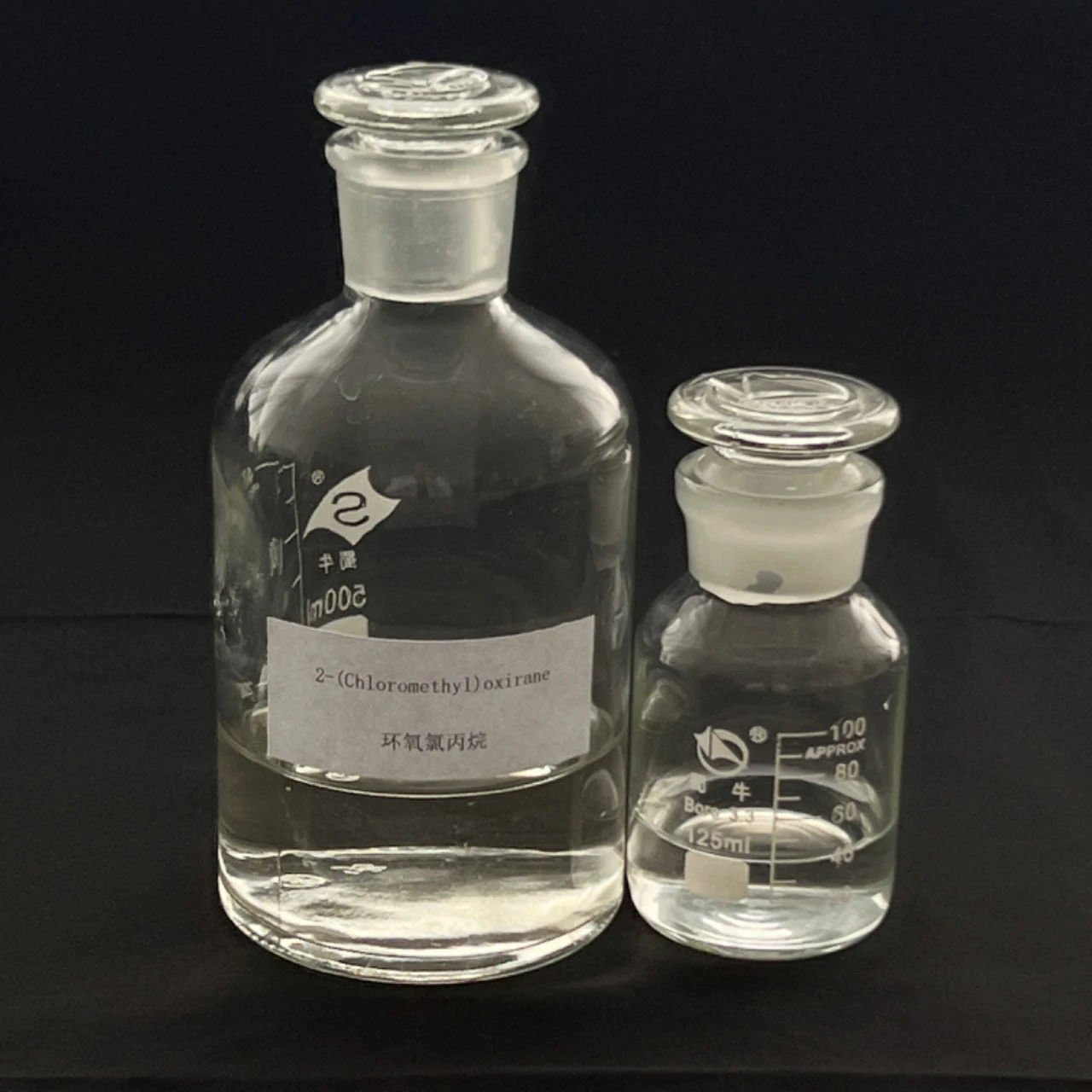2-(Chloromethyl)oxirane, also known as epichlorohydrin, plays a critical role in the synthesis of synthetic glycerol, also known as glycerin. The process involves the replacement of a chlorine atom in epichlorohydrin with hydroxyl groups to produce glycerol.
Here’s how this synthesis is achieved:
- Epichlorohydrin Hydrolysis: Epichlorohydrin is hydrolyzed in the presence of a strong base, typically sodium hydroxide (NaOH) or potassium hydroxide (KOH). This hydrolysis reaction results in the replacement of the chlorine atom with hydroxyl (-OH) groups. The chemical reaction can be summarized as follows:Epichlorohydrin + 2 NaOH → Glycerol + Sodium Chloride + Water
- Purification: The mixture produced in the hydrolysis step contains glycerol, sodium chloride (table salt), and water. Glycerol is separated and purified from this mixture using various methods, including distillation and filtration.
Industrial Uses of Glycerol (Glycerin):
Glycerol is a versatile chemical with numerous industrial applications, including:
- Pharmaceuticals and Cosmetics: Glycerol is used in the pharmaceutical and cosmetic industries for its moisturizing and emollient properties. It is a common ingredient in lotions, creams, and skincare products.
- Food and Beverage: Glycerol is used as a food additive (E422) in the food and beverage industry. It serves as a sweetener, humectant, and thickening agent in various products.
- Chemical Industry: Glycerol is used as a raw material in the production of various chemicals, including epoxides and alkyd resins.
- Polyurethane Production: Glycerol is used as a polyol component in the production of polyurethane foams and other polyurethane materials.
- Plastics and Polymers: It is used in the synthesis of various plastics, including polyester resins, as a plasticizer, and in the manufacture of some biodegradable plastics.
- Explosives and Dynamite: Glycerol is used in the production of explosives, such as nitroglycerin, which is used in the mining and construction industries.
- Tobacco Industry: It serves as a humectant to maintain moisture content in cigarettes and other tobacco products.
- Medicine and Pharmaceuticals: Glycerol is used in the formulation of various pharmaceuticals, including cough syrups and suppositories.
- Biodiesel Production: Glycerol is a byproduct of biodiesel production, and its utilization in various applications contributes to the economic viability of the biodiesel industry.
Glycerol’s ability to retain moisture, its chemical reactivity, and its non-toxic nature make it a valuable ingredient in a wide range of products and processes across multiple industries. chemical 2-(Chloromethyl)oxirane Its versatility and applications contribute to its importance in various industrial sectors.
How does 2-(Chloromethyl)oxirane relate to the production of glycidyl compounds and their applications in various industries?
2-(Chloromethyl)oxirane, also known as epichlorohydrin, is a precursor in the production of glycidyl compounds, which are essential intermediates used in various industries. Here’s how 2-(Chloromethyl)oxirane is related to the production of glycidyl compounds and their applications:
- Production of Glycidyl Compounds:
- Epichlorohydrin is a key raw material in the production of glycidyl compounds. It is used as a starting material in the synthesis of various glycidyl ethers and esters.
- Glycidyl Ether Synthesis:
- Epichlorohydrin is typically used to synthesize glycidyl ethers through a reaction with an alcohol. The reaction results in the replacement of the chlorine atom in epichlorohydrin with an ether functional group, creating glycidyl ethers. These glycidyl ethers can be tailored to have different properties and applications.
- Glycidyl Ester Synthesis:
- Epichlorohydrin can also be used to synthesize glycidyl esters through a reaction with a carboxylic acid. This reaction replaces the chlorine atom in epichlorohydrin with an ester functional group, forming glycidyl esters.
Applications of Glycidyl Compounds in Various Industries:
- Epoxy Resins: One of the primary applications of glycidyl compounds is in the production of epoxy resins. These resins are used in coatings, adhesives, composite materials, and a wide range of other products. Epoxy resins are known for their excellent adhesion, chemical resistance, and versatility.
- Adhesives and Sealants: Glycidyl compounds are used in the formulation of high-performance adhesives and sealants. They provide strong bonds and are used in construction, aerospace, automotive, and other industries.
- Composites: Glycidyl compounds are employed in the production of advanced composites, including fiberglass-reinforced plastics (FRP) and carbon fiber-reinforced composites. These materials find applications in aerospace, automotive, and sporting goods.
- Coatings: Glycidyl-based coatings are used to provide protection, corrosion resistance, and decorative finishes in the automotive, architectural, and industrial coatings industries.
- Electrical and Electronic Components: Epoxy resins made from glycidyl compounds are used in electrical and electronic components, such as printed circuit boards, to provide insulation and protection.
- Aerospace and Aviation: Glycidyl compounds are utilized in aerospace and aviation applications, including aircraft components, due to their strength and lightness.
- Marine Industry: Epoxy resins made from glycidyl compounds are used in boat building and marine applications, providing water-resistant and durable finishes.
- Wind Energy: Glycidyl compounds play a role in the manufacturing of wind turbine blades, where their strong and lightweight properties are advantageous.
- Automotive Industry: Epoxy resins are used in automotive parts, coatings, and adhesives for their strength and durability.
The versatility and broad range of applications for glycidyl compounds make them indispensable in many industries. Their properties, such as excellent adhesion, corrosion resistance, and versatility, have led to their extensive use in numerous products and processes.
